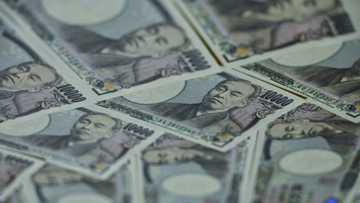US consumer inflation accelerates in March, dampening rate cut hopes

Source: AFP
PAY ATTENTION: The 2024 Business Leaders Awards Present Entrepreneurs that Change Nigeria for the Better. Check out their Stories!
US consumer inflation continued to accelerate last month, according to US government data published Wednesday, reducing the chances of an early interest rate cut from the Federal Reserve.
The US central bank has raised interest rates to the highest level in 23 years as it attempts to bring inflation back down firmly to its long-term target of two percent.
Price increases have slowed significantly from their peak in 2022, but have crept higher in recent months, keeping the markets guessing about when the Fed could start cutting rates, even as other indicators of US economic strength have remained resilient.
The annual consumer price index (CPI) came in at 3.5 percent in March, up 0.3 percentage points from February, the Labor Department said in a statement.
This was slightly above expectations of a 3.4 percent rise, according to a survey of economists conducted by Dow Jones Newswires and The Wall Street Journal.
Monthly inflation came in at 0.4 percent, also slightly above expectations.
PAY ATTENTION: Share your outstanding story with our editors! Please reach us through info@corp.legit.ng!
Kiss June cut goodbye
"You can kiss a June interest rate cut goodbye," Bankrate chief financial analyst Greg McBride wrote in a note to clients.
"Inflation came in higher than expected, the lack of progress toward two percent is now a trend," he added.
The indexes for shelter and gasoline together contributed "over half" of the monthly increase, according to the Labor Department.
A widely watched inflation measure excluding volatile food and energy prices rose at an annual rate of 3.8 percent, in line with the data from February.
The so-called "core" inflation index rose 0.4 percent in March from a month earlier, according to the Labor Department.
Earlier this month, Fed chair Jerome Powell told a conference in California that the current risks to the US economy were "two-sided," with negative consequences for the economy if policymakers moved to cut rates too fast or too slow.
The risk of cutting too soon was that "inflation does move up," he said, adding it "would be quite disruptive if we were to have to then come back in" to raise rates.
But if the US economy continues to evolve as expected, most Fed participants still expect it will be "appropriate to begin lowering the policy rate at some point this year," he added.
Futures traders, who had placed a probability of more than 50 percent that the Fed would cut rates by mid-June, sharply dialed back their expectations after the CPI figure was published, according to data from CME Group.
They now place a probability of just under 75 percent that the first cut will have arrived by mid-September.
This could prove to be politically awkward for the independent US central bank, as its first rate cut could come shortly before November's presidential election, which will likely see President Joe Biden face former president Donald Trump.
PAY ATTENTION: Unlock the best of Legit.ng on Pinterest! Subscribe now and get your daily inspiration!
Source: AFP



